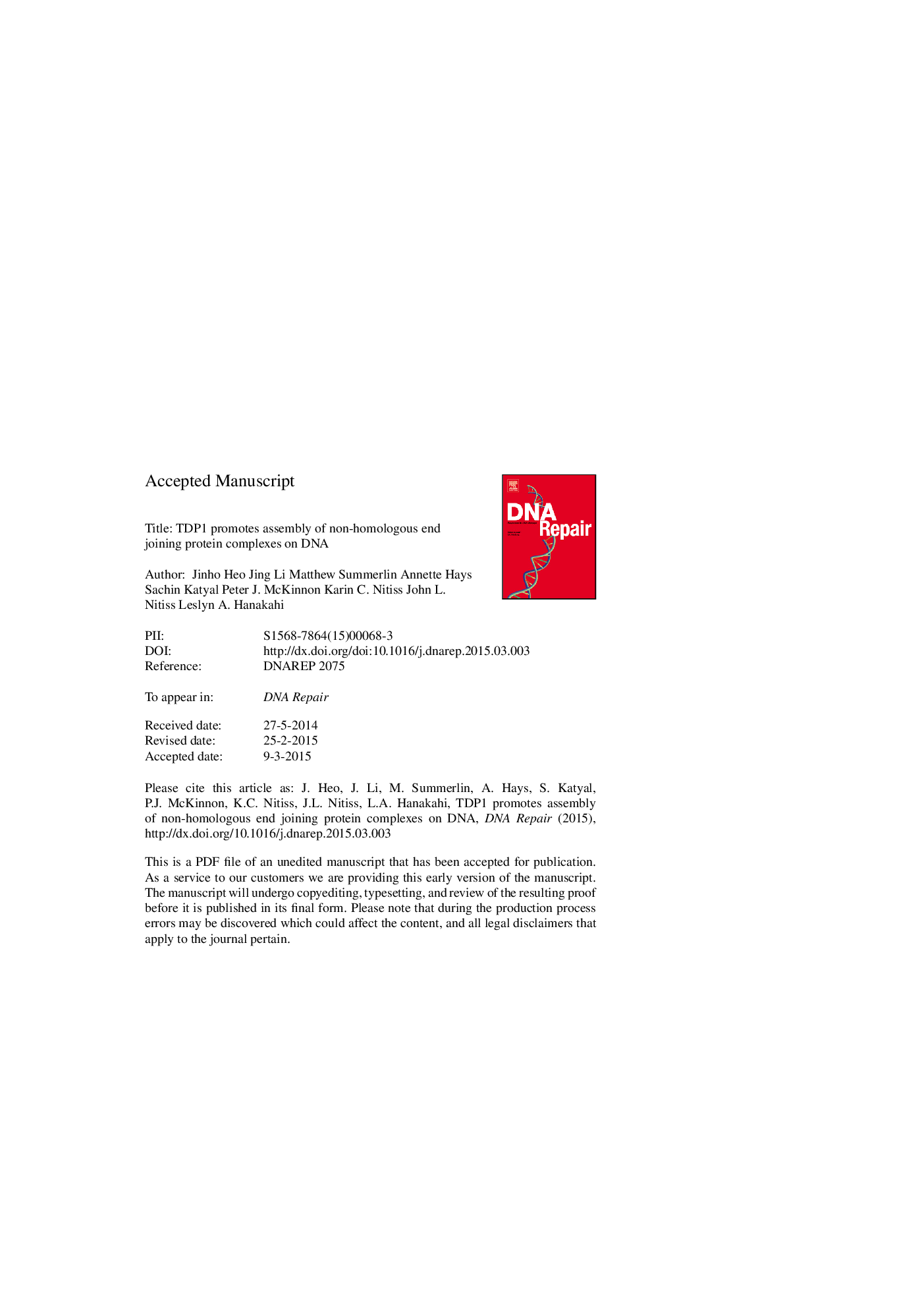| کد مقاله | کد نشریه | سال انتشار | مقاله انگلیسی | نسخه تمام متن |
|---|---|---|---|---|
| 8320612 | 1539398 | 2015 | 23 صفحه PDF | دانلود رایگان |
عنوان انگلیسی مقاله ISI
TDP1 promotes assembly of non-homologous end joining protein complexes on DNA
دانلود مقاله + سفارش ترجمه
دانلود مقاله ISI انگلیسی
رایگان برای ایرانیان
کلمات کلیدی
موضوعات مرتبط
علوم زیستی و بیوفناوری
بیوشیمی، ژنتیک و زیست شناسی مولکولی
زیست شیمی
پیش نمایش صفحه اول مقاله

چکیده انگلیسی
The repair of DNA double-strand breaks (DSB) is central to the maintenance of genomic integrity. In tumor cells, the ability to repair DSBs predicts response to radiation and many cytotoxic anti-cancer drugs. DSB repair pathways include homologous recombination and non-homologous end joining (NHEJ). NHEJ is a template-independent mechanism, yet many NHEJ repair products carry limited genetic changes, which suggests that NHEJ includes mechanisms to minimize error. Proteins required for mammalian NHEJ include Ku70/80, the DNA-dependent protein kinase (DNA-PKcs), XLF/Cernunnos and the XRCC4:DNA ligase IV complex. NHEJ also utilizes accessory proteins that include DNA polymerases, nucleases, and other end-processing factors. In yeast, mutations of tyrosyl-DNA phosphodiesterase (TDP1) reduced NHEJ fidelity. TDP1 plays an important role in repair of topoisomerase-mediated DNA damage and 3â²-blocking DNA lesions, and mutation of the human TDP1 gene results in an inherited human neuropathy termed SCAN1. We found that human TDP1 stimulated DNA binding by XLF and physically interacted with XLF to form TDP1:XLF:DNA complexes. TDP1:XLF interactions preferentially stimulated TDP1 activity on dsDNA as compared to ssDNA. TDP1 also promoted DNA binding by Ku70/80 and stimulated DNA-PK activity. Because Ku70/80 and XLF are the first factors recruited to the DSB at the onset of NHEJ, our data suggest a role for TDP1 during the early stages of mammalian NHEJ.
ناشر
Database: Elsevier - ScienceDirect (ساینس دایرکت)
Journal: DNA Repair - Volume 30, June 2015, Pages 28-37
Journal: DNA Repair - Volume 30, June 2015, Pages 28-37
نویسندگان
Jinho Heo, Jing Li, Matthew Summerlin, Annette Hays, Sachin Katyal, Peter J. McKinnon, Karin C. Nitiss, John L. Nitiss, Leslyn A. Hanakahi,